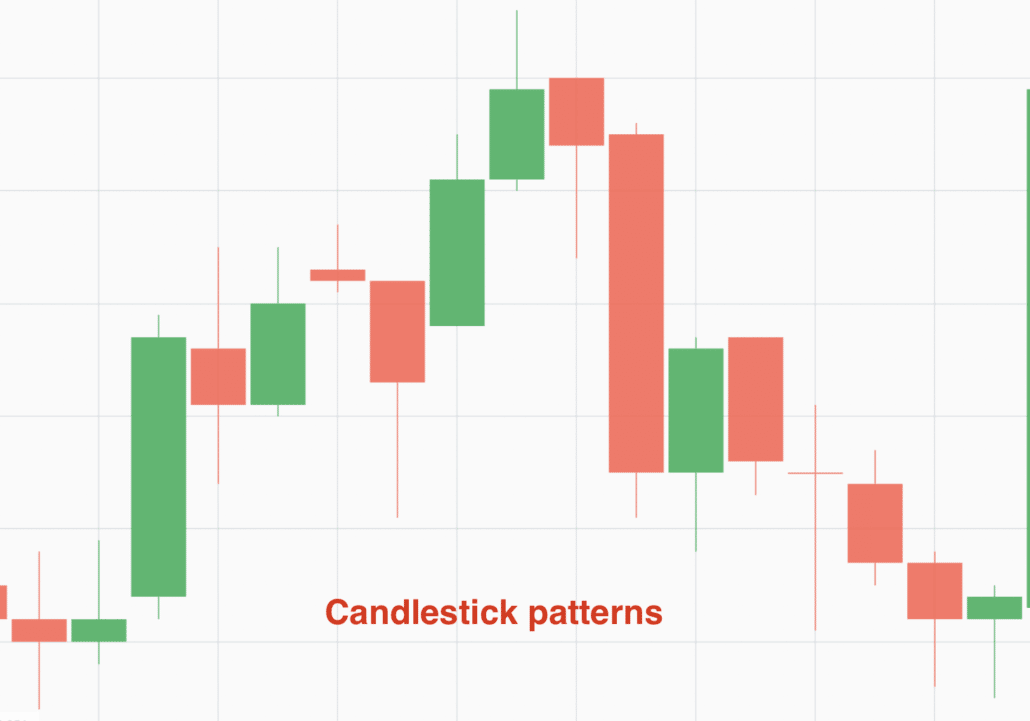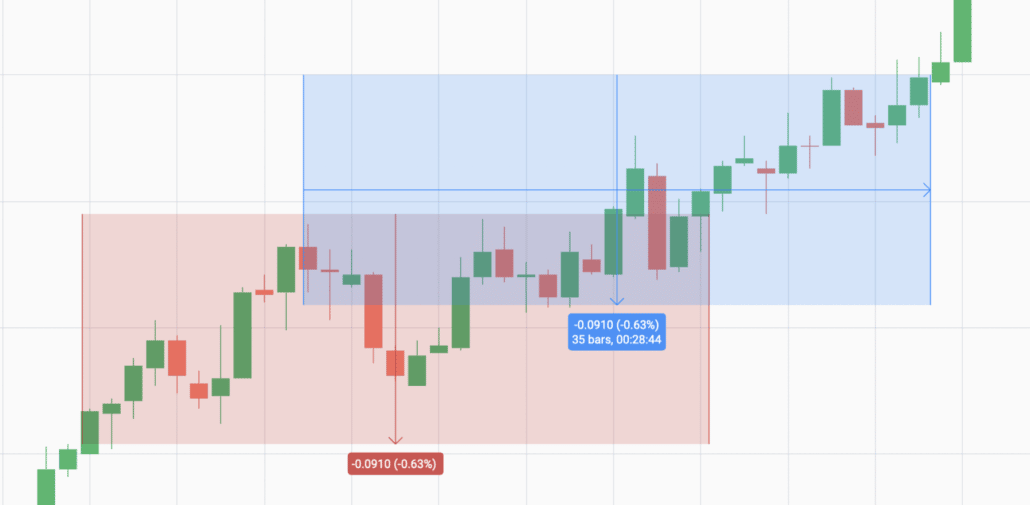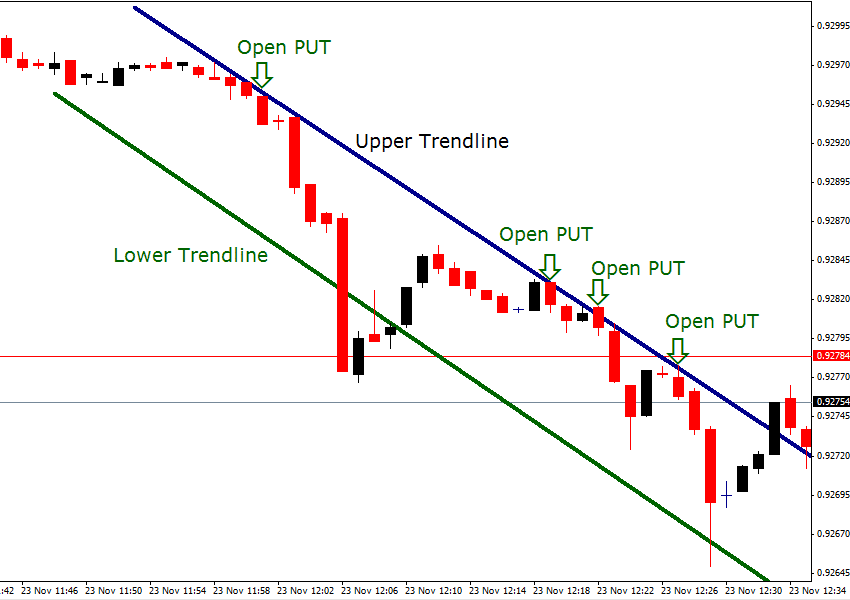Binary options trading has become very popular worldwide among the trader’s community because it provides profit briefly. But most traders make the mistake of trading binary options without having a proper strategy and losing money. But this isn’t wise. If you are also amazed by the idea of making quick money through binary options, it would be great if you prepared a strategy first.

To make it simple, we have done a detailed study of binary options trading, and we have listed the five biggest binary options trading secrets that will help you trade without losing money.
What you will read in this Post
How to make money from binary trading?
Before you get into binary trading, you should know how to make money through it and build a reliable trading system. So, for that, we have listed a few steps that will help you build it.
Learn to read candlestick charts
The price activity you see in binaries can be predicted by learning past price movements. And for that, you need to know how to read candlestick charts. They follow a pattern that you need to follow while learning candlestick charts.

Analyze the past price activity of your assets
Gambling and trading are two different things when it comes to profit. Here knowledge plays a significant role, and a knowledgeable trader who knows about the price of its assets and knows how to read past price activities will likely succeed.

Follow the pricing trends
Always look for a trend and don’t go for reversal bets, and also do not assume anything by yourself about the price. Always follow the directions and bet with a good strategy when trading for short-term binaries. Because betting against the trend can create lots of trouble.

Do not bet on your mortgage payment
Never bet on your grocery money, even if you are sure about the big hit. Because there is risk linked to this kind of trading, it is always recommended to ignore these risks, Be wise.
Gain experience before you put in a considerable amount
Hire brokers who offer demo accounts. Before you put your money at risk, try to practice a few executing trades in those demo accounts.
What are 5 biggest binary options trading secrets?
Below, we have mentioned some preparation secrets for a binary trading option that you should know before trading. These tips will provide you with enough details that you need to follow while you trade. Hopefully, all these below mentioned tips will give you a better overview of the strategies and secrets of binary options trading.
#1 Always choose a good broker
With every passing day, the number of traders increases in binary trading. There is a rush of both the pro traders and the beginners rushing to open a trading account. The demand for binary trading options has not only increased the number of traders but has also created a massive army of brokers that is increasing every month. Traders look for brokers who can look for a great trading platform or payoff ratios.
In the beginning, the role of binary options brokers was to create a far-off tax shelter for the casinos where gambling was legal. But in the last few years, these brokers have begun to try their hand at binary options. And because of this, there is significant competition between brokers, but unfortunately, it has also created a massive army of fraudulent brokers who practice shady business tricks.

So, we suggest that brokers, whether a beginner or a pro, properly investigate, connect with different traders, read the reviews of other websites and check for negative or rash comments. These things will give you a better overview of the website and the brokers. The time you invest here while researching for a good broker will help you in the long run.
(Risk warning: Your capital can be at risk)
#2 Restraint your expectations
When they enter the world of binary trading, most traders come with big dreams of getting richer with these options. In most cases, the opposite happens because the newcomers become frustrated and want to quit. According to the reports, all the newcomers who have shifted to binary options are former online poker players.

And the craze of binary options, which emerged as another gambling outlet, gave them vast hopes of getting rich in a different fashion because, in this gambling scene, the traders have to put all their stakes at once. There is a lot of competition that has made the odds better, but you need to conduct your review. And if you are a trader, you must remember that you have to turn the odds of trading in your favor to succeed over time.
#3 Always know your candlesticks and TA
In binary trading options, no one can predict what your investment will turn into within a minute, an hour, or even in a month or the coming future. To succeed in this game, you need to have good technical analysis or TA by your side. If your broker fails to analyze these things, you will need an MT4 forex platform that will provide additional support.

You should always be aware of all the scheduled events because that significantly impacts your selected asset. Knowing your assets and their TA and candlesticks formation will always help you succeed in binary trading.
Other than the TA, it would be best to recognize your pattern because that plays a significant role, especially in candlestick formations.
(Risk warning: Your capital can be at risk)
#4 Have a great focus
There is a very high chance of getting distracted in binary trading options because of the abundance of possibilities in binary options. Other than various assets offered there, the brokers also present you with multiple options like boundary, one-touch, and ladder. But the best way if you want to succeed is to stick with the put/call options until you become familiar with all the nuances of binary trading, and it is also suggested to stick with well-known assets.

Trade those assets when the market is active, the volumes are at the highest level, and the liquidity concerns do not impact your valuations. We suggest the traders have patience and wait for solid trends that offer high-probability setups.
#5 Create a trading strategy
If you fail to develop a trading plan, you are eventually failing at it. The best way to succeed, according to the veterans, is to create a step-by-step planning strategies for binary traders before you approach the market. You don’t need to create a plan on your own. You can look for various techniques available at search engines that claim to work. You have to do a little research and invest your time reading the reviews and strategies and find a suitable one for your assets.
Stick by your plan, leave your ego, and you will eventually succeed.
Pros and cons of binary trading options
After we have learned about the secrets of binary trading options, it is essential that we also know about their advantages and their disadvantages. So, to give all the essential information, we have listed several advantages and disadvantages of binary trading. Go through these to get all the insights into binary trading options.

Pros
Steady returns
Unlike other investments, you don’t have to wait for an extended period in binary trading to achieve significant profits. In binary trading, the traders can make profits within seconds. And most of the binary options expire within a day or even less.
Huge returns
One of the most significant advantages of binary trading is the high returns associated with various trades. In binary trading, traders can get about 70 percent of return rates in most cases, and that’s not something you will witness in the stock market.
All about the numbers
In binary trading options, you only have to be correct 55 percent with your predictions. If you build a proper strategy and follow all the secrets mentioned earlier, the chances are that you will get a big hit.
Pros
- Steady returns
- Huge returns
- You don’t need to be always right
Cons
- All lose situation
- missing market regulation
Cons
All lose situation
Binary trading is very different from the stock market. Because in the stock market, you can sell your stock when its price goes down. But that is not the case in binary trading. Because if you are not correct and predict the future of your binary options wrong, you lose all your money here. Your assets are not tangible in binary trading.
Market regulation
There are very few regulated markets for binary trading. That multiplies all your risks that are associated with the investment. And if you choose to trade on those markets, you need to do so with the help of a regulated broker like Quotex.io or Anyoption.

(Risk warning: Your capital can be at risk)
Conclusion: Know the secrets
Trading binary options can be an easy and quick method on how to make money with binary options if you have the right approach. All you need to do is follow the secrets and tricks of trading and follow a proper strategy. If you do it correctly and have patience and control over your emotions, you can achieve significant profits in binary trading. As a result, binary trading has become very popular, and people from all corners of the world are trying their hands in this trading.






